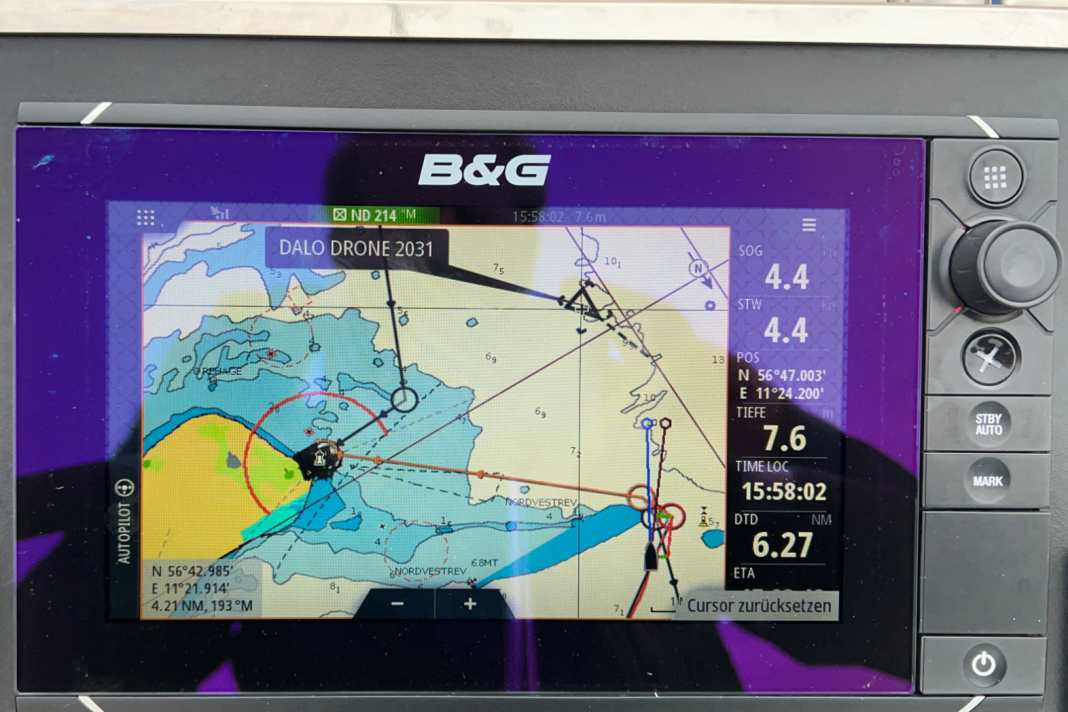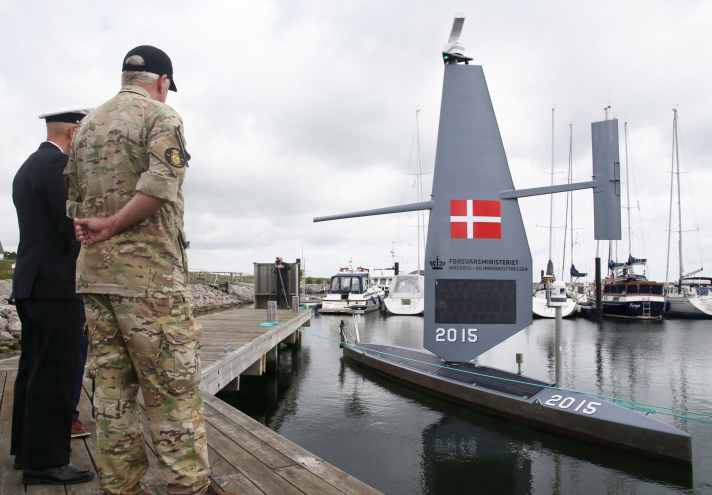Unusual AIS contact, sailing drones monitor shipping lanes in the Skagerrak and Kattegat




The military has a total of four Saildrone Voyagers in test operation. The 10-metre-long sailing drones are intended to monitor what is going on in the Baltic Sea - above and below the water. They are silent and have almost unlimited endurance - making the floating drones from US manufacturer Saildrone the ideal watchdog at sea. The Danish navy has been testing the fully autonomous, unmanned 30-foot USVs (short for Unmanned Surface Vessel) in the Baltic Sea since June. While the drones stationed in Køge Bay in the south-west of the island of Zealand were initially travelling in the Öresund, they are now on patrol in the Kattegat and Skagerrak. They are usually travelling at a speed of 2.5 to 3.6 knots.

Sailing drones utilise wind and sun
The special thing about the drones is that they generally only need the wind to patrol their area of operation. This is ensured by a single large wing sail amidships, while the power required for the electronics on board is supplied by the sun. However, the Voyager is not completely at the mercy of the elements: an additional diesel-electric drive is available for special cases where greater speed is required
A total of four Voyager drones are involved in the test. The Danish Ministry of Defence not only wants to test the technology for its general suitability, but also possible deployment concepts.
New situation due to Russia's war of aggression
They can also draw on existing experience gained by the US Navywhich has been using Saildrone USVs for several years, for example in the fight against drug smuggling and illegal migration. According to the manufacturer, more than one million nautical miles have been travelled worldwide with the sail drones in all areas and conditions.
The challenge for the Danish Navy and for the other NATO neighbours in the Baltic Sea has grown steadily since the start of the Russian attack on Ukraine, which violated international law. The need for the most complete reconnaissance possible has grown considerably. This is where the naval drone comes into play.
Monitoring above and under water
Above water, the focus is primarily on ship movements. This includes the passages of the shadow fleet operating on behalf of the Kremlin, as well as those of combat units of the Russian Navy, which operates naval bases near St Petersburg and in the exclave of Kaliningrad. In order to obtain a comprehensive picture of the situation within a radius of up to 30 nautical miles, the artificial intelligence on board has powerful radar and camera equipment, including infrared technology.
Underwater, the aim is to protect important infrastructure such as pipelines or data cables, which have already been the target of hybrid sabotage on several occasions. In addition, the sensor technology, which is capable of detecting large sea creatures such as whales in the non-military research spectrum, is also able to register Russian submarines.
The sail drones have no lookout
An important aspect in terms of safety: the Saildrone is equipped as standard with an AIS transceiver, radar and rader reflector, the prescribed lights and, of course, cameras for monitoring the close range.
The only thing it cannot offer as an unmanned vehicle is the Rule 5 of the Collision Prevention Rules (KVR) The "proper lookout (...), which provides a complete overview of the situation and the possibility of a collision". According to general understanding, this still means a human person.
Outlook: UPSs soon to be nothing special?
But it doesn't always have to stay that way. In a first step towards normalising the new technology, the Saildrone Voyager was already classified by the American Bureau of Shipping (ABS) in November 2023 - as the first USV ever. Autonomous means of transport, on water as well as on land and in the air, are coming ever closer to commercial series production in many areas.
It is not yet possible to predict what this will mean for the course of maritime traffic in general and the right of way in particular. Until then, however, skippers should exercise caution and adjust their own behaviour and course sooner rather than later. Especially this summer in Danish waters, when one of the ten-metre-long grey drones with a large Dannebrog on its sail comes into view.

